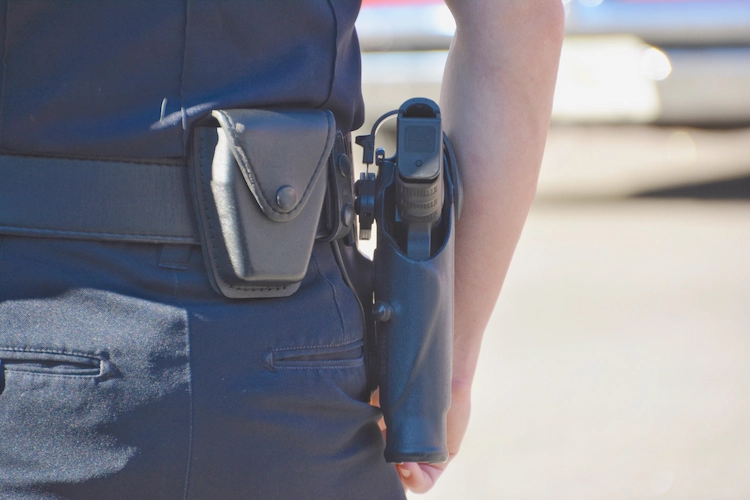U.S. v. Jones: Police GPS Tracking Requires a Warrant

In U.S. v. Jones, the Supreme Court was called upon to interpret the Fourth Amendment of the constitution when police used global positioning technology to fight crime. The issue before the Court was whether attaching a GPS device to a vehicle and then using the device to monitor its movements constitutes a search under the Fourth Amendment.
The Facts of the Case
In this case, Washington, D.C., police installed a GPS device on a vehicle owned by nightclub owner Antoine Jones, who was suspected of drug-related crimes. Although police had previously obtained a warrant, it had expired when the device was installed and was limited to a specific geographic area, which the tracking exceeded.
The GPS data—collected over a period of 28 days—was ultimately used to track Jones to a “stash” house where police found $850,000 in cash, 97 kilograms of cocaine, and 1 kilogram of crack cocaine. Jones was convicted on drug-related charges and sentenced to life in prison. However, a D.C. Circuit Court ultimately overturned the conviction, finding that the evidence obtained via the GPS should be suppressed.
The Supreme Court’s Decision
The Supreme Court agreed that Jones’s Fourth Amendment rights had been violated, and the conviction must be overturned. However, the consensus seemed to end there. In addition to the majority opinion, the justices issued two concurrent opinions. The reasoning in both opinions was very different.
The majority opinion, authored by Justice Scalia, focused on the precise language of the Fourth Amendment, which protects the “right of the people to be secure in their persons, houses, papers, and effects, against unreasonable searches and seizures.” Under this analysis, the Government’s physical intrusion on an “effect” (in this case Jones’s vehicle) for the purpose of obtaining information constitutes a “search.”
The framers of the U.S. Constitution could have never imagined that global position technology would be possible. Nevertheless, Justice Scalia concluded that “this type of encroachment on an area enumerated in the Amendment would have been considered a search within the meaning of the Amendment at the time it was adopted.” In articulating his argument, Justice Scalia stressed the concepts of physical trespass, which had been the primary approach to Fourth Amendment issues until the latter half of the 20th century.
In his concurring opinion, Justice Samuel Alito applied the more modern “reasonable expectation of privacy” analysis articulated in Katz v. United States. He reasoned that while limited tracking may not violate privacy rights, the sustained tracking used in this case crosses the line.
Justice Alito further argued that the majority’s narrow opinion failed to protect against modern attacks on personal privacy. He pointed out, “If long-term monitoring can be accomplished without committing a technical trespass—suppose for example, that the federal government required or persuaded auto manufacturers to include a GPS tracking device in every car—the [majority’s] theory would provide no protection.”
The Lingering Questions
The Supreme Court’s decision leaves many questions unanswered when it comes to our expectation of privacy and modern technology. Therefore, we expect these issues will come back before the Court in the foreseeable future.
As noted by Justice Sotomayor in her concurring opinion, “It may be necessary to reconsider the premise that an individual has no reasonable expectation of privacy in information voluntarily disclosed to third parties. This approach is ill suited to the digital age, in which people reveal a great deal of information about themselves to third parties in the course of carrying out mundane tasks.”
Previous Articles
Supreme Court Rejects Mexico’s Suit Against U.S. Gun Manufacturers
by DONALD SCARINCI on July 8, 2025
In Smith & Wesson Brands v. Estados Unidos Mexicanos, 605 U.S. ____ (2025), the U.S. Supreme Co...
SCOTUS Sides With Employee in Reverse Discrimination Case
by DONALD SCARINCI on July 2, 2025
In Ames v. Ohio Department of Youth Services, 605 U.S. ____ (2025), the U.S. Supreme Court held tha...
Supreme Court Rejects Moment of Threat Doctrine in Deadly Force Case
by DONALD SCARINCI on June 30, 2025
In Barnes v. Felix, 605 U.S. ____ (2025), the U.S. Supreme Court rejected the Fifth Circuit Court o...
The Amendments
-
Amendment1
- Establishment ClauseFree Exercise Clause
- Freedom of Speech
- Freedoms of Press
- Freedom of Assembly, and Petitition
-
Amendment2
- The Right to Bear Arms
-
Amendment4
- Unreasonable Searches and Seizures
-
Amendment5
- Due Process
- Eminent Domain
- Rights of Criminal Defendants
Preamble to the Bill of Rights
Congress of the United States begun and held at the City of New-York, on Wednesday the fourth of March, one thousand seven hundred and eighty nine.
THE Conventions of a number of the States, having at the time of their adopting the Constitution, expressed a desire, in order to prevent misconstruction or abuse of its powers, that further declaratory and restrictive clauses should be added: And as extending the ground of public confidence in the Government, will best ensure the beneficent ends of its institution.





